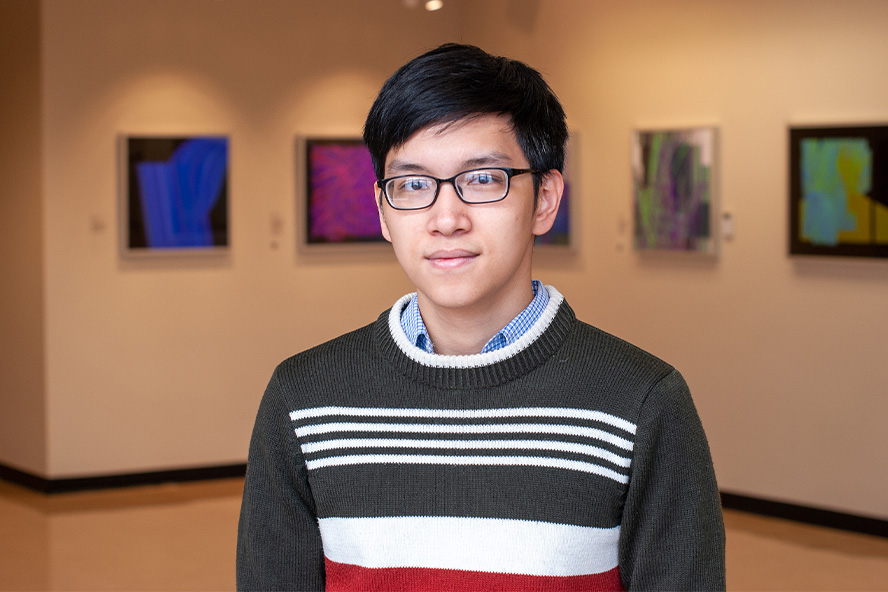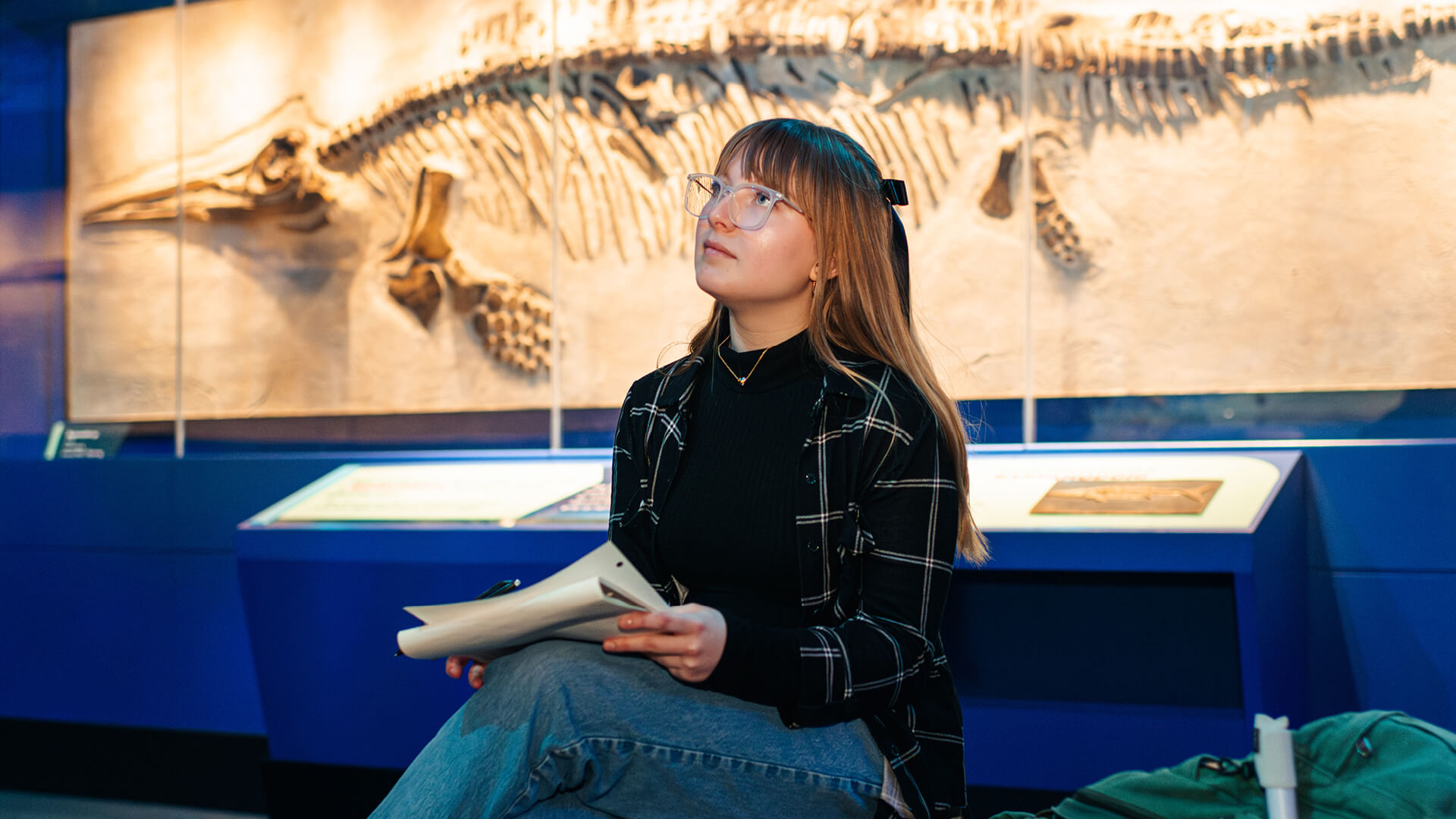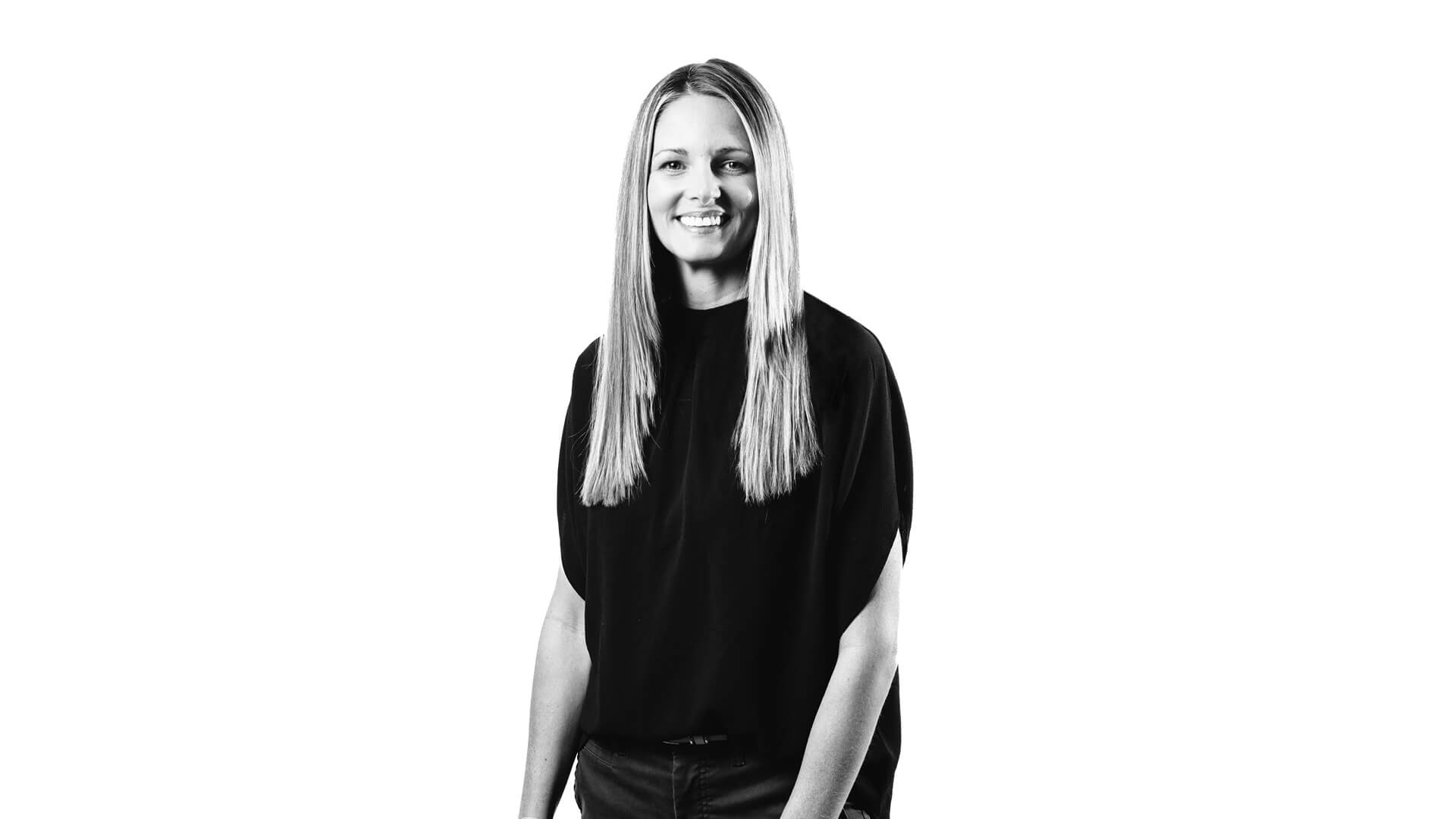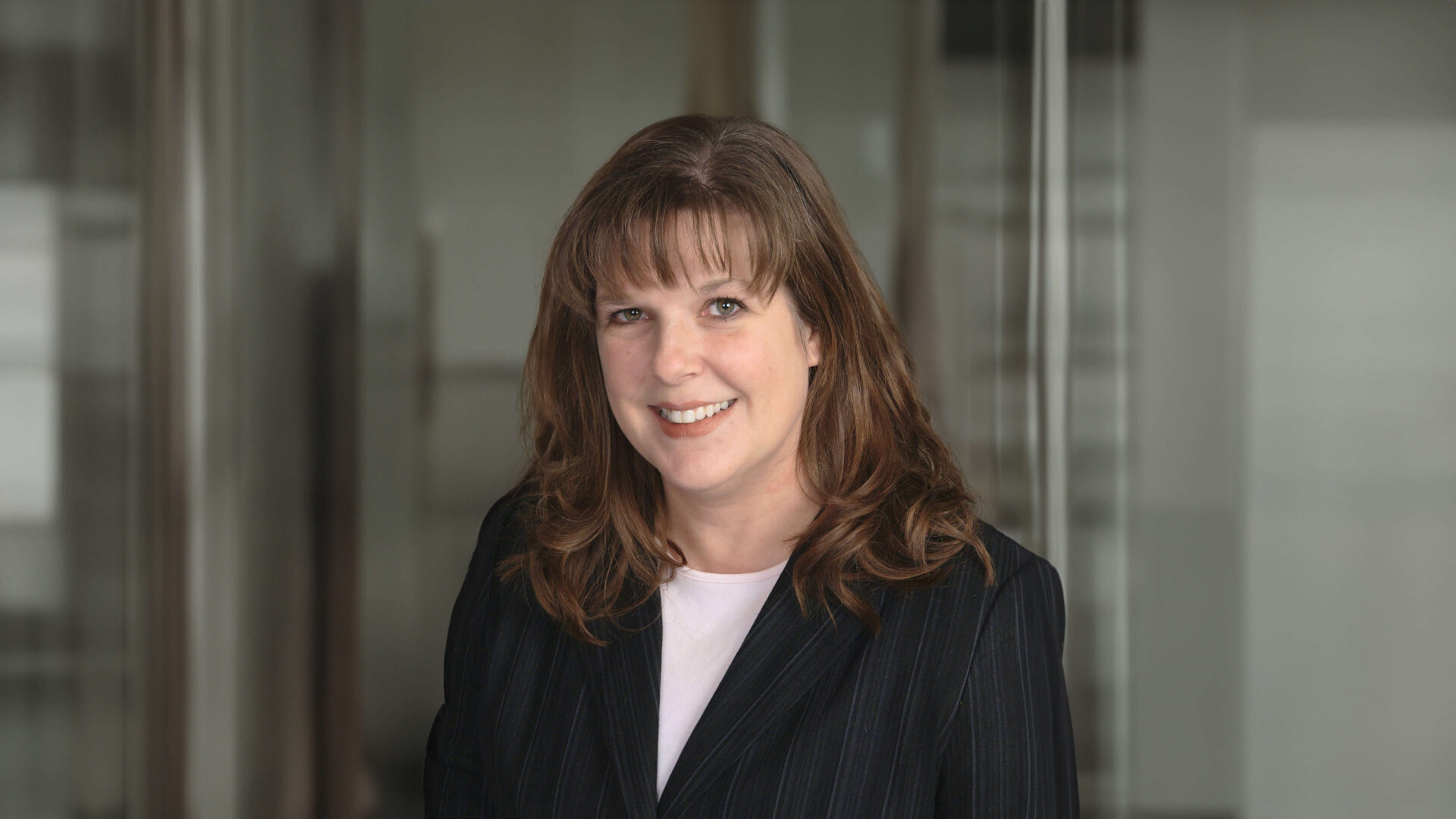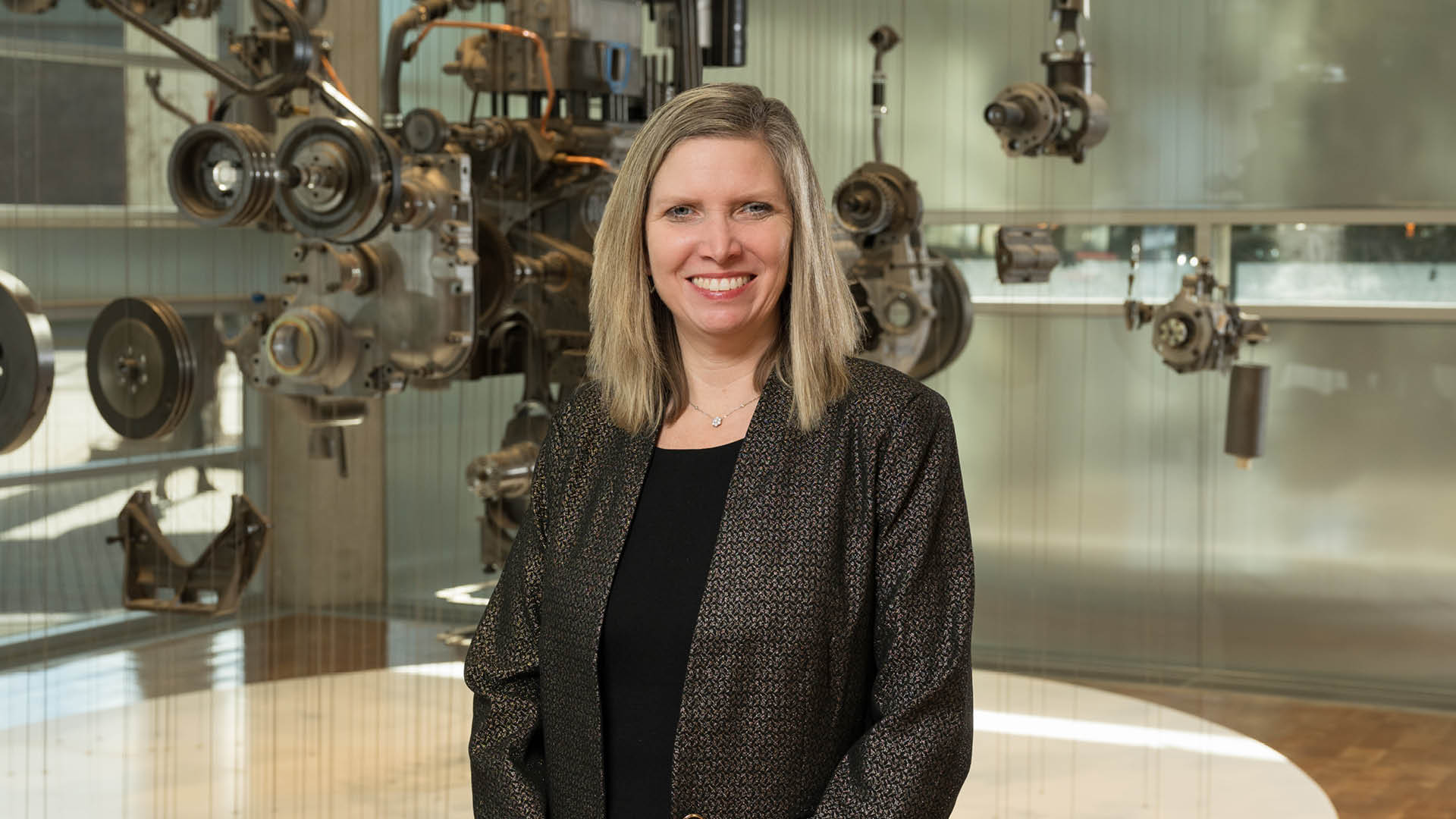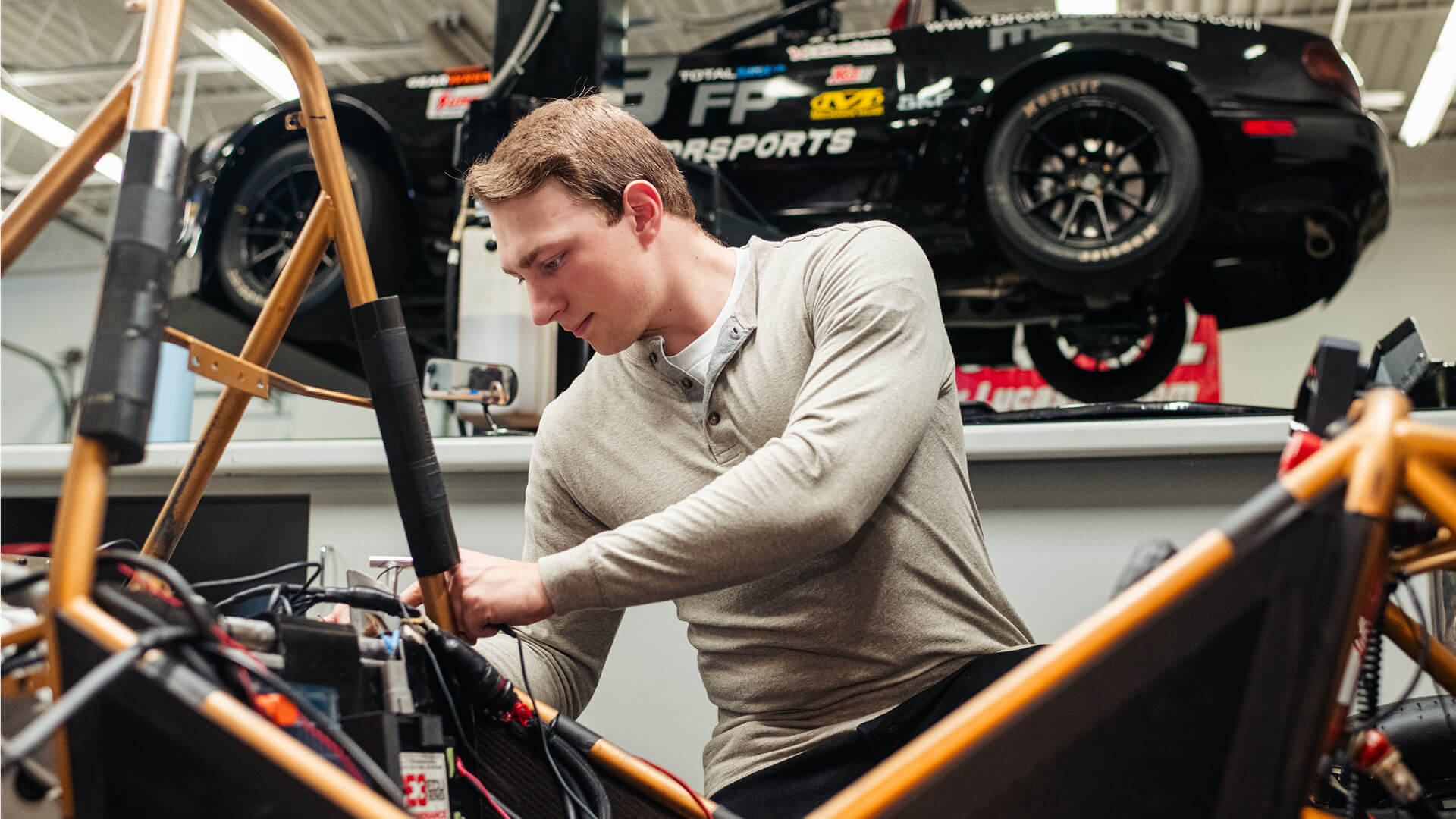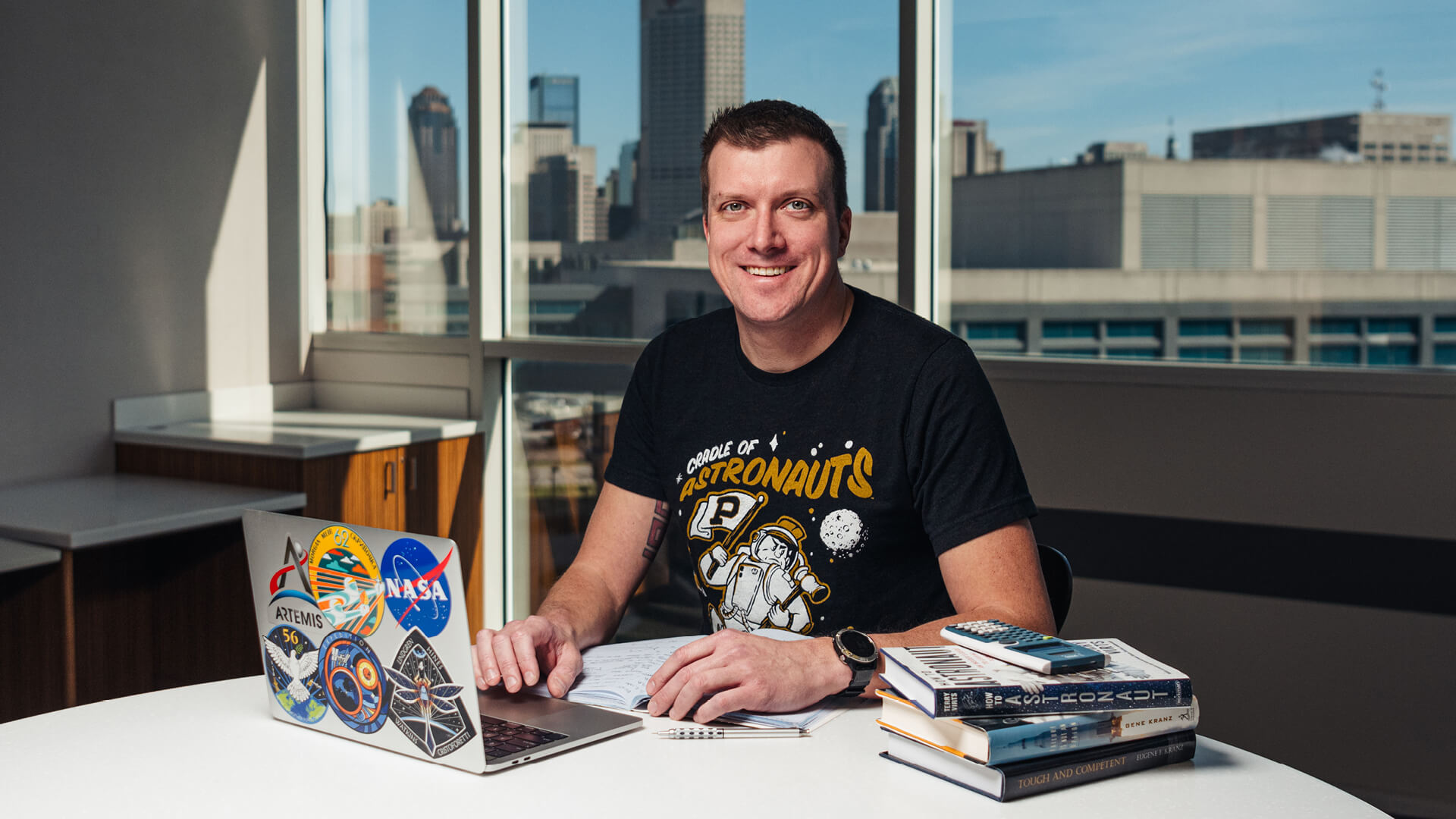Purdue blazed a historic trail in computer science and still pushes the field forward
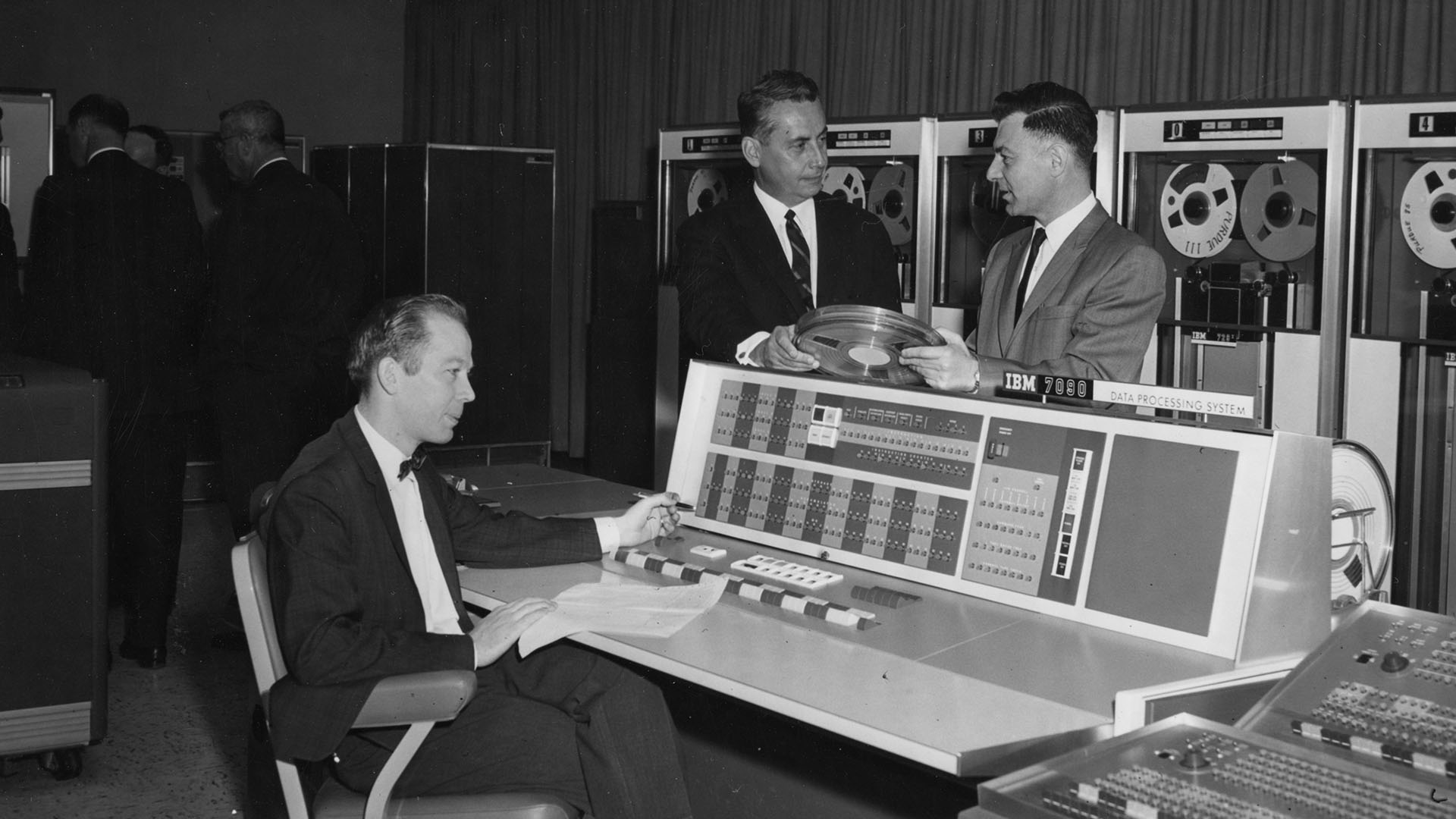
On April 26, 1963, Purdue hosted an all-day event to dedicate its new IBM 7090 digital computer and celebrate having introduced the nation’s first academic computer science department. View this and other images of the people, places and machinery that helped Purdue define a discipline in this photo gallery. (Photos courtesy of Purdue Department of Computer Science)
New initiatives will enhance the nation’s first computer science department
It was an all-day affair on April 26, 1963, when Purdue University dedicated its new high-speed IBM 7090 digital computer – and used the occasion to celebrate having launched the nation’s first academic computer science department a few months earlier.
Among the speakers at the dedication ceremony was Purdue President Frederick L. Hovde, who told the assembled guests and dignitaries that “the electronic computer may well be the single most important development of the 20th century in terms of its overall impact on the management of the operating elements of our complex and gigantic society,” according to Robin Lea Pyle’s 2015 book, “First in the Field: Breaking Ground in Computer Science at Purdue University.”
As an enthusiastic supporter of Purdue’s early efforts in computer science, Hovde clearly recognized the computer’s ability to change the university. But he had no way of knowing just how prophetic those comments would someday seem, as computer science has grown to impact every academic discipline and virtually all aspects of daily life.
We were defining a discipline, and we sort of knew we were.
Paul Young
Former Purdue computer science professor
And Purdue helped drive its emergence as an academic field of study.
“We were defining a discipline, and we sort of knew we were,” former computer science professor Paul Young recalled in a 1993 departmental video titled, appropriately enough, “Defining a Discipline: The Early History of Computer Science at Purdue University.”
“There was a lot of discussion about curriculum, and there was an ACM (Association for Computing Machinery) task force, but we were there doing it. We were first in a lot of things. That was exciting.”
That pioneering spirit has driven the department throughout its 60-year history, and it shows no sign of abating.
Today, computer science is the largest and most selective undergraduate major on Purdue’s campus, with 2,405 undergraduate and 538 graduate students enrolled as of fall 2022. Within the last few years, the department has added two undergraduate majors – data science and artificial intelligence – to complement the traditional computer science degree path.
And Purdue recently unveiled plans that should only enhance the department’s standing. The Purdue Computes initiative will provide vital strategic investments for faculty hires, artificial intelligence research and semiconductor facility upgrades, aiming to help the computer science program consistently rank among the top 10 in the U.S. by the end of the decade.
While announcing the Purdue Computes initiative, Purdue President Mung Chiang’s comments echoed the sentiments Hovde expressed six decades earlier on computing’s essential societal role.
“When it comes to computing, AI and chips, areas that will redefine the entire economy and society in every way imaginable, the strategic hiring, structuring and investment announced today enables Purdue University to advance to the forefront, with unparalleled excellence at scale in the country,” Chiang said.
Indeed they do, which befits an institution with a longer tradition in computer science than any other – and a bright future ahead.
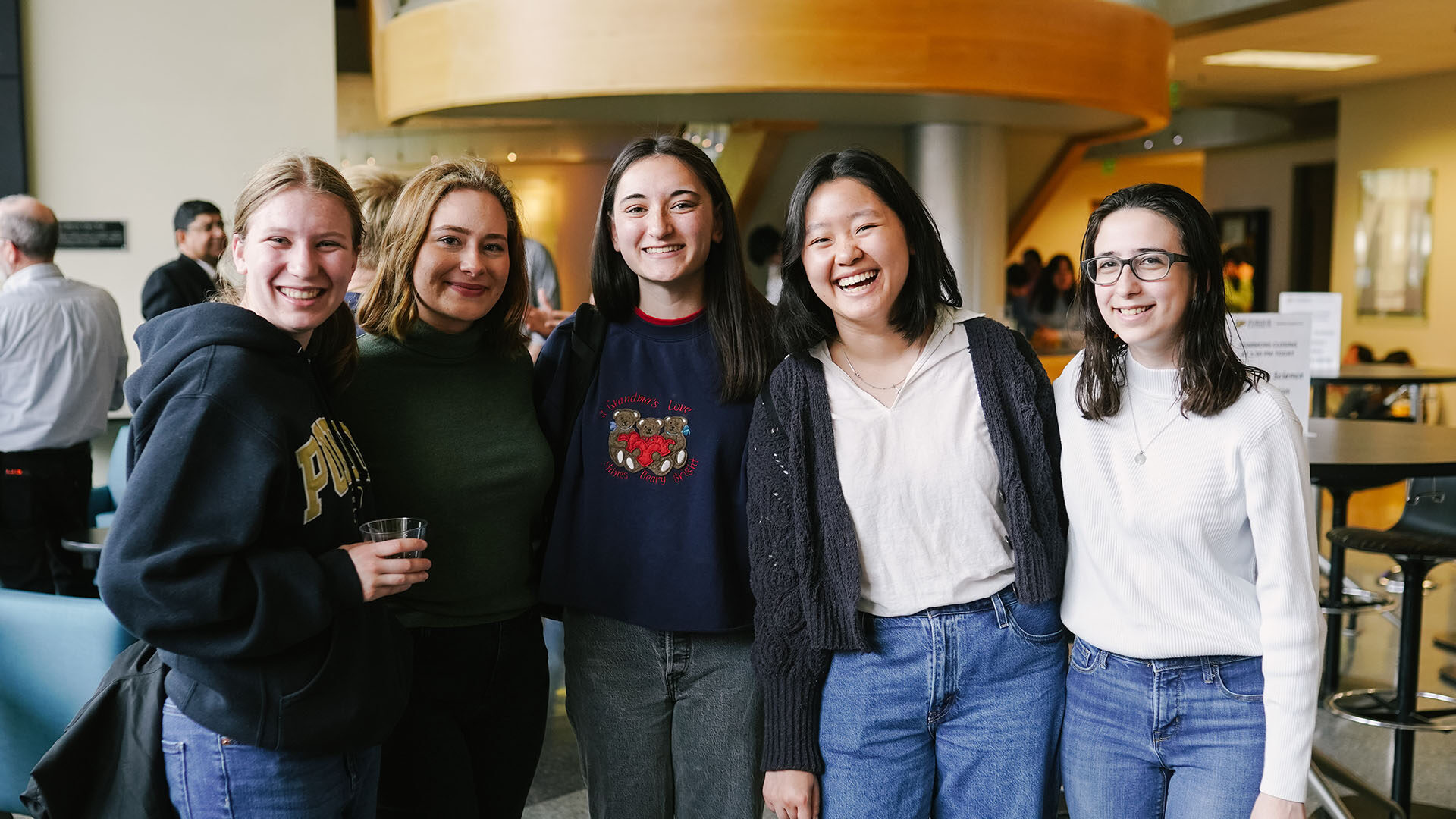
Overcoming early skepticism
Although some in academia shared Hovde’s excitement, computer science certainly did not enjoy universal acceptance in its early days as an academic discipline. Some skeptics did not view it as a science at all, dismissing computer usage as a vocational skill that should not require a college degree.
“In electrical engineering, I had an advisor who said, ‘Well, what do you really want to do?’” recalls Ward Cunningham (BS interdisciplinary engineering ’72, MS computer science ’77). “I said, ‘Well, I like studying computers.’ And he says, ‘Computers for what? You can’t just study computers. You’ve got to study computers as applied to something else.’”
Undaunted, Cunningham studied them anyway, and he would change the world as a result. In 1995, Cunningham introduced WikiWikiWeb, an online hypertext publication that allowed users to collaboratively manage page content. The wiki software he developed would form the backbone of Wikipedia, the online encyclopedia that ranks among the world’s most heavily trafficked websites.
The attitude Cunningham’s advisor expressed was common in that era. When Samuel D. Conte arrived at Purdue as the founding head of computer science, one of his first responsibilities was to convince peers that this new department was necessary. “I went around and talked to the engineering faculty and science department heads and so on, trying to tell them what computer science was and why it was worthwhile studying. This was very difficult,” Conte said in the “Defining a Discipline” video.
And it took decades before those attitudes truly changed. Susanne E. Hambrusch, the department’s head from 2002-07, says many in academia remained unaware of computer science’s potential when she joined the Purdue faculty in 1982. Hambrusch says the internet explosion in the 1990s helped the discipline finally gain widespread acceptance as a societal game-changer.
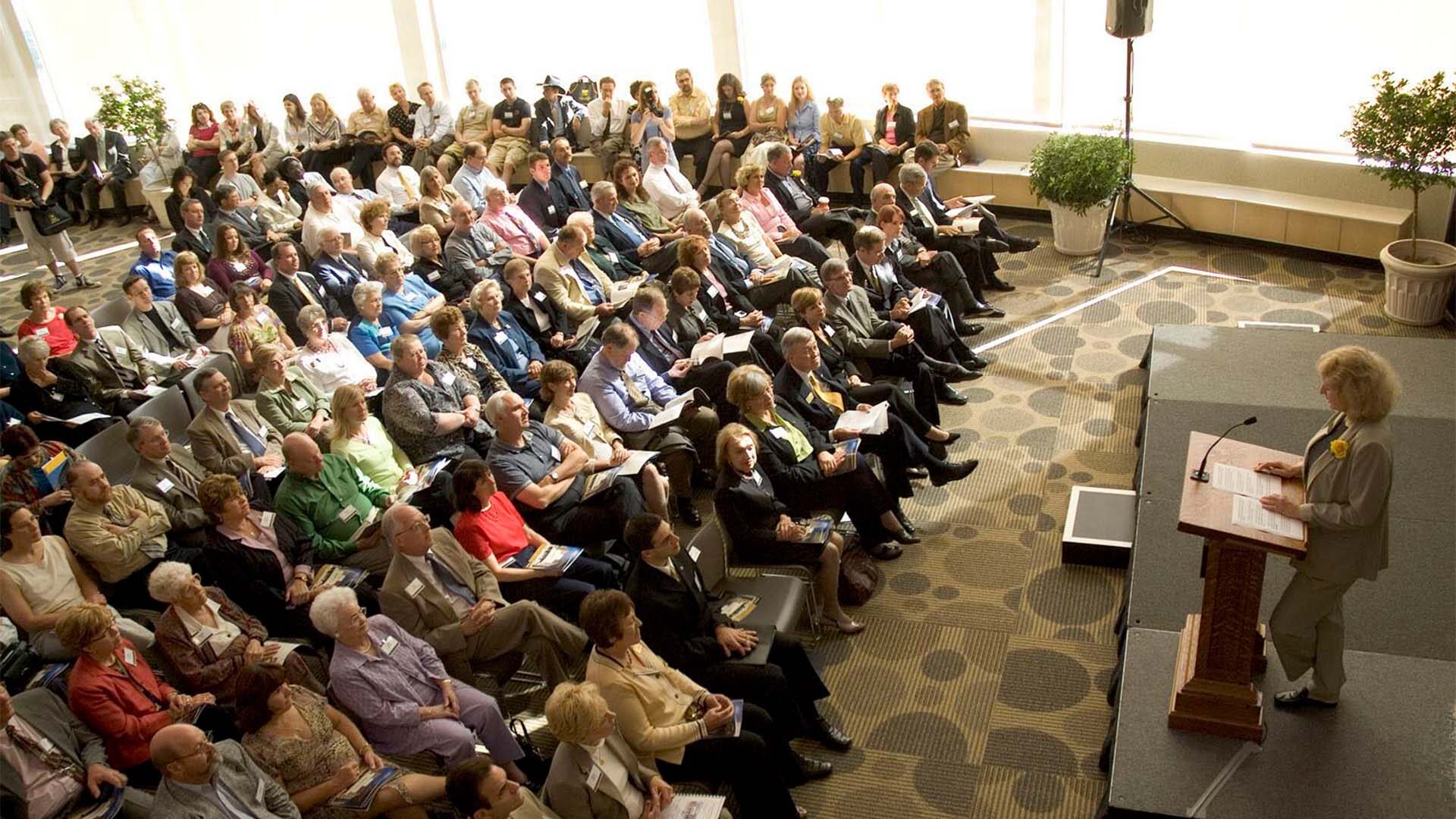
Interestingly enough, Purdue’s Peter J. Denning, Douglas E. Comer and Paul McNabb ensured that Boilermakers contributed to this important development, as well. They led Purdue’s Computer Science Network (CSNET) team that connected computer science departments across the world in the early 1980s. Founded by Purdue alumnus Lawrence H. Landweber (PhD computer science ’67), the CSNET project helped Purdue get online well before the global internet had evolved into the ubiquitous force it is today.
With visionaries like numerical analysis specialists Walter Gautschi and John R. Rice, early artificial intelligence expert Terry Frederick and high-performance computing luminary Saul Rosen walking the halls in the department’s infancy, Purdue turned out to be an excellent place for impressionable young students to grow.
“I hung out with pioneers, mostly,” says Cunningham, who also credits former Purdue electrical engineering professor and computer scientist Leon Chua for influencing his understanding of nonlinear dynamics. “I always thought that I was kind of a tagalong on that, but I paid attention. And because I tagged along with a lot of different people, I got a pretty broad perspective on all the things you could do.”
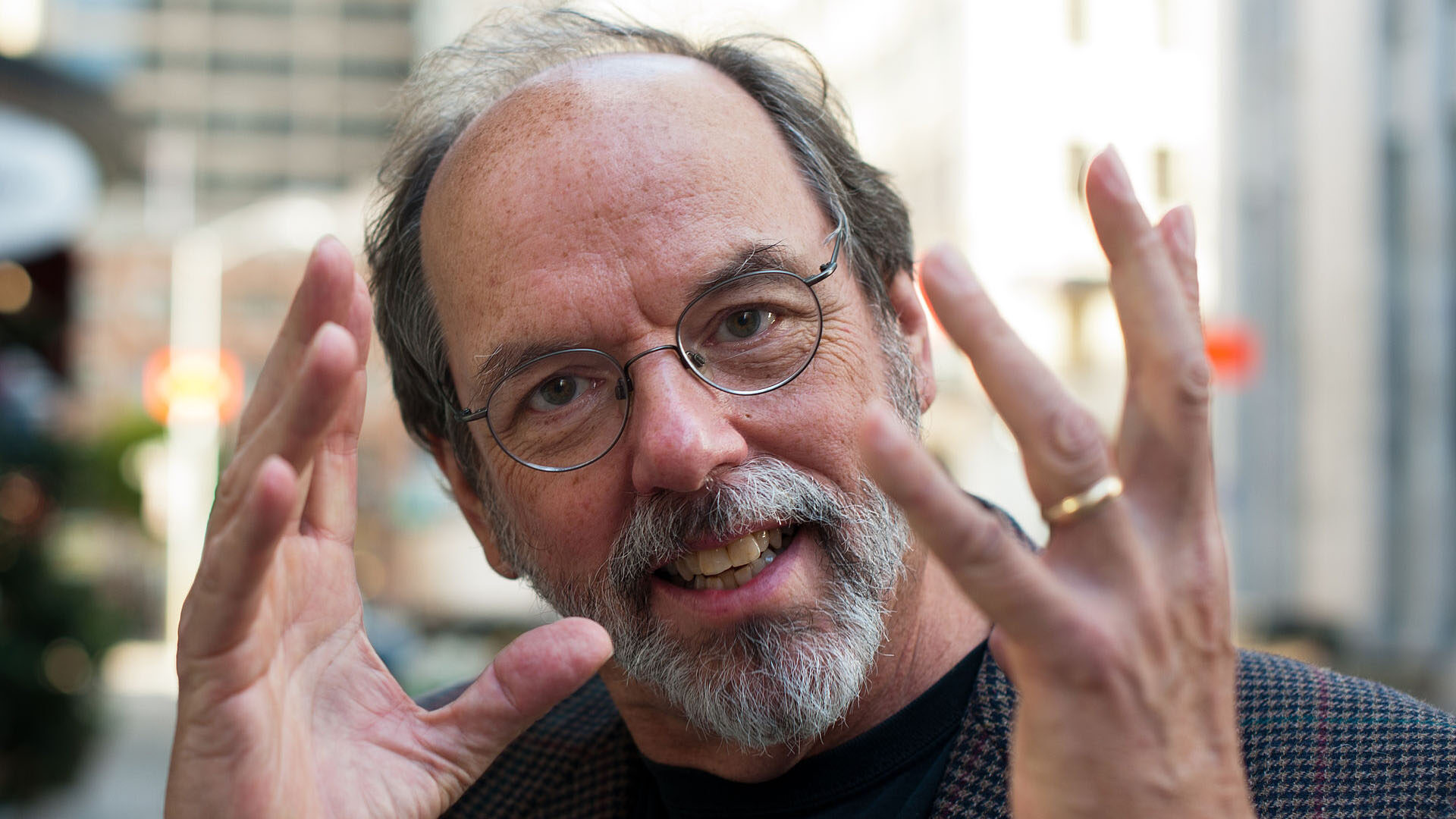
Establishing a presence
In the 1962-63 academic year, Purdue welcomed 24 master’s and doctoral students to campus as part of its inaugural computer science classes. Many more firsts would soon follow.
The department – officially established on Oct. 24, 1962 – awarded its first three master’s degrees in 1964. Its first two doctorates would go to Kenneth Brown and Karl Usow in 1966.
The first four-year group of undergraduate students seeking bachelor’s degrees in computer science arrived in 1968.
And in 1975, Dorothy Denning would become the first female student to complete a computer science doctorate at Purdue. Denning published the first thesis on secure information flow, and she went on to become a globally recognized cybersecurity expert. She literally wrote the book on the subject, publishing her landmark “Cryptography and Data Security” in 1982 while teaching at Purdue, where after completing her doctorate, she became the first female tenure-track member of the computer science faculty.
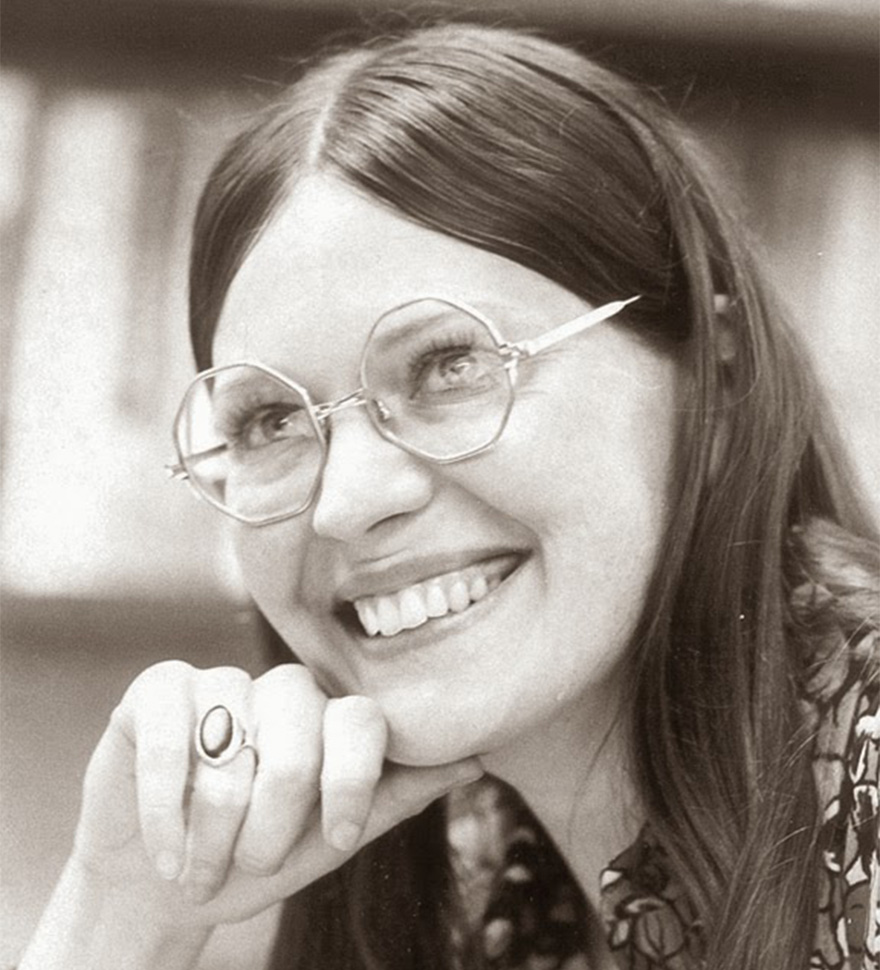
“It was really the first textbook on that topic,” she says. “I started teaching a course at Purdue on that, and of course, there was no book. I was just using articles that had been published. I thought it would be good to put together a book, and I think I did a good job of pulling together the field at the time and making it explainable, thorough and well-organized.”
Purdue later became the first university to offer a graduate degree in computer security, and it still maintains a foothold within the information security arena. Founded in 1998, Purdue’s Center for Education and Research in Information Assurance and Security (CERIAS) employed a unique, multidisciplinary approach to become a world-renowned center for information security research and education under the leadership of executive director emeritus Eugene H. Spafford.
Research orientation
CERIAS is but one of the many Purdue computer science research groups that have made significant contributions in areas like operating systems, bioinformatics, networking, programming languages, robotics, databases, and graphics and visualization.
Among Purdue’s most notable research efforts was the Software Engineering Research Center (SERC), initially a joint venture between Purdue, the University of Florida and 15 industry partners working through the National Science Foundation’s Industry-University Cooperative Research Centers program and led by Richard A. DeMillo. Another major project is the Center for Science of Information, which in 2010, under the leadership of Purdue professor Wojciech Szpankowski, became Indiana’s first NSF-funded Science and Technology Center.
With most of these research teams, there is a select group of students whose presence is nothing short of invaluable: “The PhD students define and support the research faculty,” Hambrusch explains, “so they are very important.”
With more than $15 million in annual research expenditures, the department’s research footprint continues to grow as new degree paths emerge and new professors bring different specialties into the mix. Purdue is currently placing special emphasis on topics like data science and artificial intelligence, with the university creating the Initiative for Physical Artificial Intelligence (IPAI) to influence developments in AI by leveraging its traditional strengths in growing, making and moving things.
Part of the Purdue Computes initiative, IPAI will have support from 50 new faculty members and 250 Presidential Doctoral Excellence Award recipients who will begin pursuing PhDs at Purdue within the next five years.
Promising research opportunities do not exist for upper-level graduate students alone, however.
Trung Dang participated in multiple research projects as an undergraduate student under faculty members Ninghui Li, Alex Psomas and Paul Valiant. In fact, he earned an honorable mention in the Computing Research Association’s 2023 Outstanding Undergraduate Researcher competition for his work in theoretical computer science, as did classmate Shreyas Kharbanda for his efforts in distributed systems.
By going to Purdue and interacting with all of these people, I get to know more about other cultures, more about their knowledge, and I get to take the best of many worlds to basically grow myself as a computer scientist.
Trung Dang Senior in computer science
Dang says his experiences working with these professors sparked his interest in theoretical computer science and inspired him to work toward becoming a professor himself.
“The research opportunities that Purdue gives to undergrad students are incredibly diverse,” Dang says. “If you’re interested in research, the most important thing is to find a professor that you work well with. Once you find that, you can use it as a positive feedback loop for you to learn more and be more involved with research. Ultimately, you achieve your goal: You are doing research on the cutting edge of computer science.”
Looking toward the future
The field of computer science has shifted from a mathematical orientation in its earliest days – focused on numerical analysis and computability – to become increasingly focused on scientific topics like applications, communication, data, theory and systems.
And the field will only continue to evolve alongside technological advancements that push society in new directions.
One thing that seems unlikely to change is that Purdue will continue to churn out highly competent, employable computer science graduates to work in both industry and academia.
Students like Dang, whose experiences as a computer science student and participant on Purdue’s algorithmic programming team prepared him to collaborate with colleagues from any background. Working alongside classmates Riley Borgard and Richard Li, Dang’s team placed 20th out of 132 teams – and third among U.S. entrants – at the International Collegiate Programming Competition World Final held in Bangladesh in November 2022.
“I have friends from many different countries,” says Dang, a native of Quy Nhon in the Vietnamese province of Binh Dinh. “At Purdue, I get to meet people from these different cultures who are basically imparting their culture’s knowledge into the big mass of knowledge that Purdue has. By going to Purdue and interacting with all of these people, I get to know more about other cultures, more about their knowledge, and I get to take the best of many worlds to basically grow myself as a computer scientist.”
Likewise, these bright students’ presence will shape Purdue’s impact on the discipline, helping the first university to introduce computer science as an academic field of study remain on the cutting edge. “We have a remarkable situation whereby Purdue has generated enormous upward momentum while simultaneously tripling its undergraduate enrollments in computer science,” Provost Patrick Wolfe said in the Purdue Computes announcement. “With additional investment and a focus on exceptionally high-quality faculty, this momentum will accelerate further. Great things are in the future at Purdue.”
